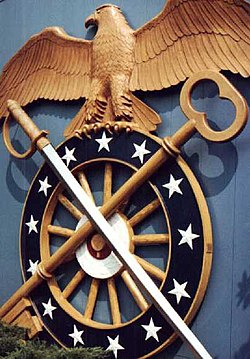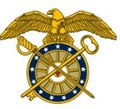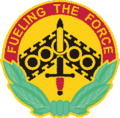| Quartermaster Corps | |
|---|---|
 Quartermaster Corps branch insignia | |
| Country | |
| Allegiance | United States Army Quartermaster Corps |
| Branch | |
| Role | Sustainment |
| Website | Official Website |
| Commanders | |
| Quartermaster General | COL Erin C. Miller |
The United States Army Quartermaster Corps, formerly the Quartermaster Department, is a sustainment and former combat service support (CSS) branch of the United States Army. It is also one of three U.S. Army logistics branches, the others being the Transportation Corps and the Ordnance Corps.
Contents
- History
- Insignia
- Functions
- Former functions
- Units
- Military Occupational Specialities
- Leadership / School
- Notable casualties
- Quartermaster Creed
- Military Order of Saint Martin
- Quartermaster Unit Insignia
- See also
- References
- Further reading
- External links
The U.S. Army Quartermaster Corps mission is to support the development, production, acquisition, and sustainment of general supply, Mortuary Affairs, subsistence, petroleum and water, and material and distribution management during peace and war to provide combat power to the U.S. Army. The officer in charge of the branch for doctrine, training, and professional development purposes is the Quartermaster General. The current Quartermaster General is Colonel Kevin W. Agness. [1]
















